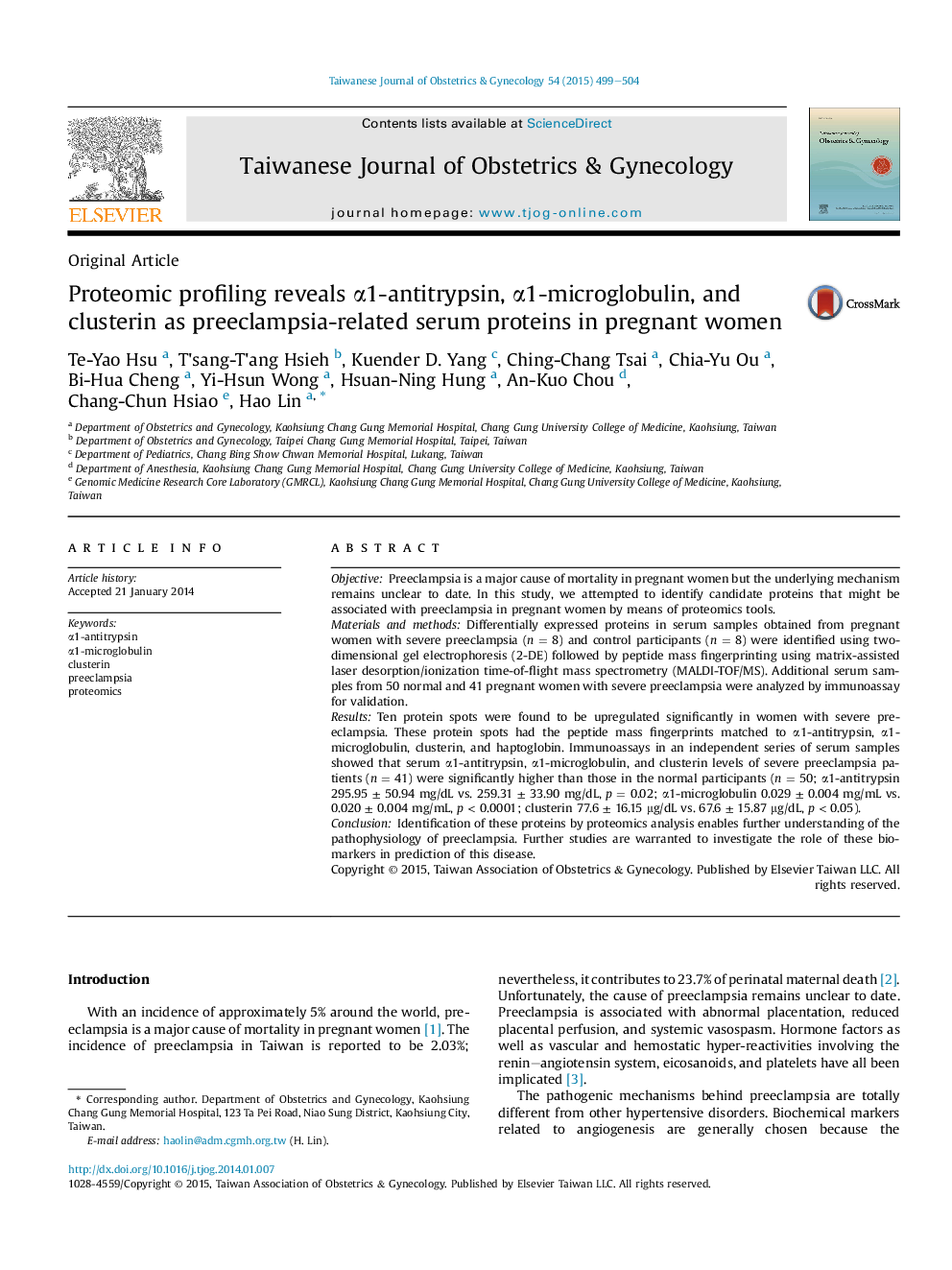| Article ID | Journal | Published Year | Pages | File Type |
|---|---|---|---|---|
| 3975467 | Taiwanese Journal of Obstetrics and Gynecology | 2015 | 6 Pages |
ObjectivePreeclampsia is a major cause of mortality in pregnant women but the underlying mechanism remains unclear to date. In this study, we attempted to identify candidate proteins that might be associated with preeclampsia in pregnant women by means of proteomics tools.Materials and methodsDifferentially expressed proteins in serum samples obtained from pregnant women with severe preeclampsia (n = 8) and control participants (n = 8) were identified using two-dimensional gel electrophoresis (2-DE) followed by peptide mass fingerprinting using matrix-assisted laser desorption/ionization time-of-flight mass spectrometry (MALDI-TOF/MS). Additional serum samples from 50 normal and 41 pregnant women with severe preeclampsia were analyzed by immunoassay for validation.ResultsTen protein spots were found to be upregulated significantly in women with severe preeclampsia. These protein spots had the peptide mass fingerprints matched to α1-antitrypsin, α1-microglobulin, clusterin, and haptoglobin. Immunoassays in an independent series of serum samples showed that serum α1-antitrypsin, α1-microglobulin, and clusterin levels of severe preeclampsia patients (n = 41) were significantly higher than those in the normal participants (n = 50; α1-antitrypsin 295.95 ± 50.94 mg/dL vs. 259.31 ± 33.90 mg/dL, p = 0.02; α1-microglobulin 0.029 ± 0.004 mg/mL vs. 0.020 ± 0.004 mg/mL, p < 0.0001; clusterin 77.6 ± 16.15 μg/dL vs. 67.6 ± 15.87 μg/dL, p < 0.05).ConclusionIdentification of these proteins by proteomics analysis enables further understanding of the pathophysiology of preeclampsia. Further studies are warranted to investigate the role of these biomarkers in prediction of this disease.
